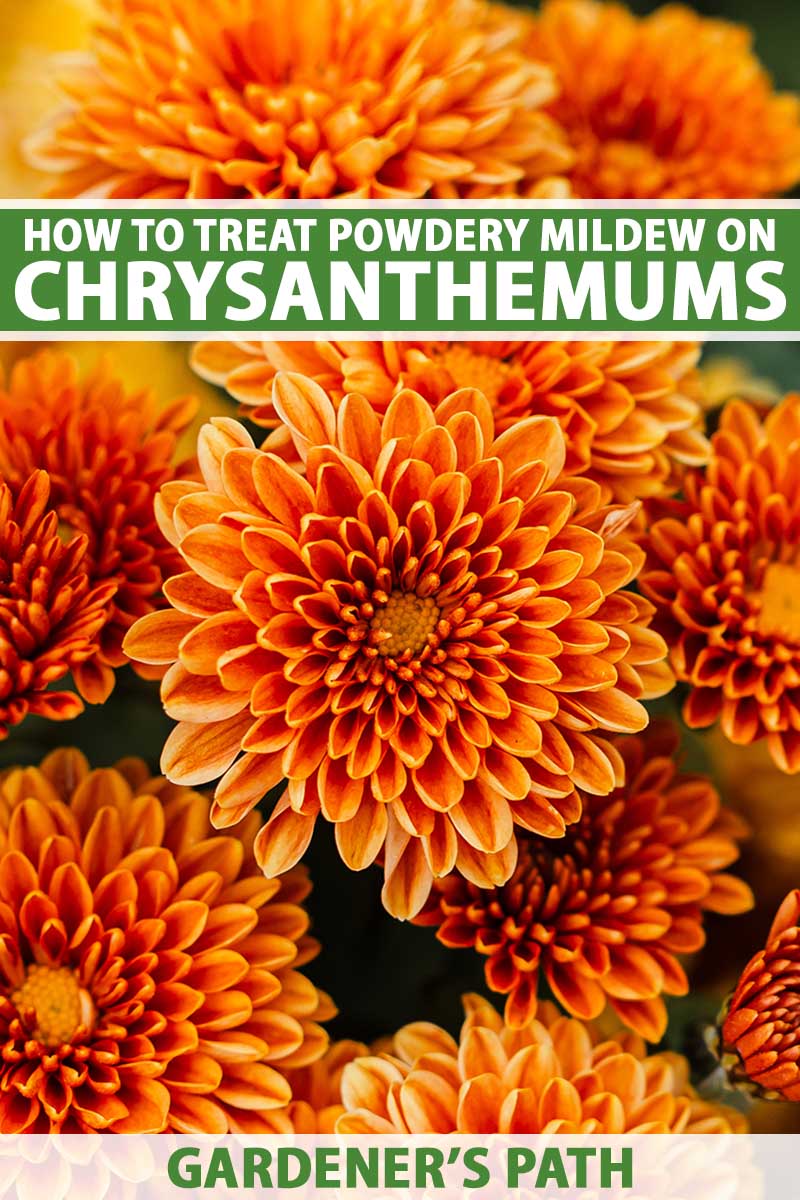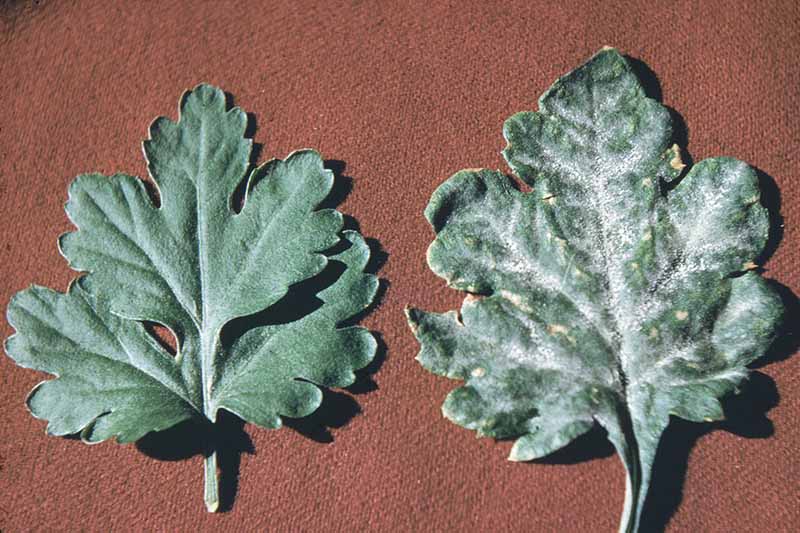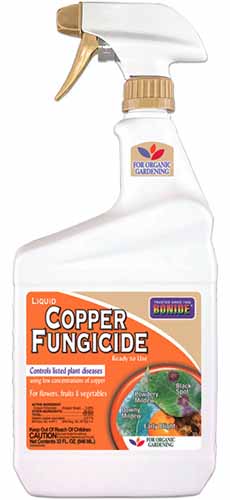If you want bright color without a lot of work or worry about diseases, mums are the way to go. We link to vendors to help you find relevant products. If you buy from one of our links, we may earn a commission. In chrysanthemums, powdery mildew is one of the most common issues you’ll come across. While it has the potential to kill your plants, it usually just makes them look kind of ugly. If you’ve noticed a strange powdery substance on your plants, you’re probably dealing with powdery mildew. We’ll help you figure out whether it’s mildew or not, and if it is, how to eliminate it. Here’s everything we’ll go over in this guide: This is a common disease but it’s not a challenging one to deal with, and a ton of different products can be very effective against it. We can even use natural methods to prevent and stop it!
What Causes Powdery Mildew in Mums?
Golovinomyces cichoracearum (formerly Erysiphe cichoracearum) and G. chrysanthemi are airborne fungi that cause the disease known as powdery mildew in chrysanthemums. These pathogens thrive in cool weather with high humidity, though 100 percent humidity will kill spores. It can survive and reproduce in temperatures ranging from 40 to 90°F, but things really start cooking when temps are between 68 and 77°F.
Symptoms
The most obvious symptom is powdery gray growth on the leaves and stems of mums. In the beginning, you’ll just see small spots of a powdery substance, usually around the base of buds and leaves. As the disease continues to progress, it looks like dirty flour has been sprinkled all over your plants. With time, the leaves might become curled, narrow, wrinkled, or otherwise distorted. Eventually, they’ll curl up and die. The only other disease that looks similar is botrytis, also known as gray mold. This causes brownish-gray fungal masses to form all over the plant. These cottony masses extend out from the stems and leaves, whereas powdery mildew coats the plant in a thin layer.
Prevention Tips
You probably aren’t here because you want to learn how to prevent powdery mildew. More than likely, you’re looking for the cure, and we’ll go over that in a bit. But understanding how to prevent it will not only help you in the future, it offers insight into what makes this disease thrive and how to fix it as well. While the fungi don’t need moving water to spread, they love high humidity. Providing proper spacing between plants improves air circulation, which helps reduce the spread of the fungi. Full sunlight helps too, primarily because it allows any moisture to evaporate and dry up quickly. While the pathogens enjoy high moisture, they don’t like free-moving water. Use this to your advantage and spray down your mums with a stream of water once a week. Do this in the morning on a sunny day so the moisture can dry up quickly. This will put a stop to any developing spores. If you know plants are prone to powdery mildew in your area, spray your chrysanthemums with a solution of one part milk to one part water. I know it sounds strange, but it actually works!
Control Methods
Control involves being constantly vigilant and removing any infected leaves or stems whenever you see them. You can also add in treatment with a copper spray, horticultural oil, or a product that contains sulfur. Or better yet, combine several treatment products in succession. If you miss a week or don’t cover the tops and bottoms of the leaves as well as the stems, the pathogens won’t be eliminated and the disease might return. I keep copper fungicide around at all times because it’s effective against so many fungal issues. Bonide Liquid Copper Fungicide If you need to grab some for your own supply kit, head to Arbico Organics and pick up a 32-ounce ready-to-use, 16- or 32-ounce hose end, or a 16-ounce concentrate bottle. Apply once a week according to package directions until the symptoms are gone, which shouldn’t take too long. If you still see symptoms after a month, it’s probably time to add a second treatment product. Bacillus subtilis is another natural option that won’t harm the surrounding environment, or birds and bees, like some fungicides can. This beneficial bacteria can be sprayed on the plant twice a week to eliminate the pathogens that cause powdery mildew, and it may be applied once a week as a preventative control. CEASE Biofungicide CEASE contains B. subtilis and can be purchased at Arbico Organics in gallon- or two-and-a-half-gallon containers. Alternate with applications of copper every 10 days. Finally, you can also use milk to treat your mums, in combination with other products or on its own. Combine one part milk with nine parts water and saturate the plant, taking care to spray the undersides of the leaves as well as the tops. For a severe infection, up the ration to half milk and half water. This spray can be used a few hours before or after applying the copper or B. subtilis. You can also use the spray as a preventative to keep powdery mildew from returning. You can read more about homemade natural treatments for powdery mildew in our guide.
Put Powdery Mildew in the Past
Yes, it’s extremely common, but powdery mildew doesn’t have to be a regular part of your gardening life when you’re growing mums. Once you know what to watch for and how to deal with it, it’s usually not too difficult to return your plants to good health. What method did you find most helpful for killing those unwelcome pathogens? Let us know in the comments! Did this guide help you to figure out and resolve your disease issues? I truly hope so! For more tips on growing chrysanthemums, you might be interested in the following guides:
How to Grow Chrysanthemums, a Late-Season DazzlerHow Long do Chrysanthemums Last?How to Use Chrysanthemums for Pest Control in the Garden





